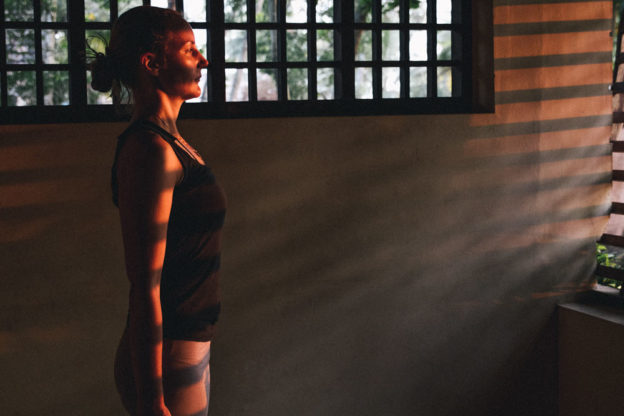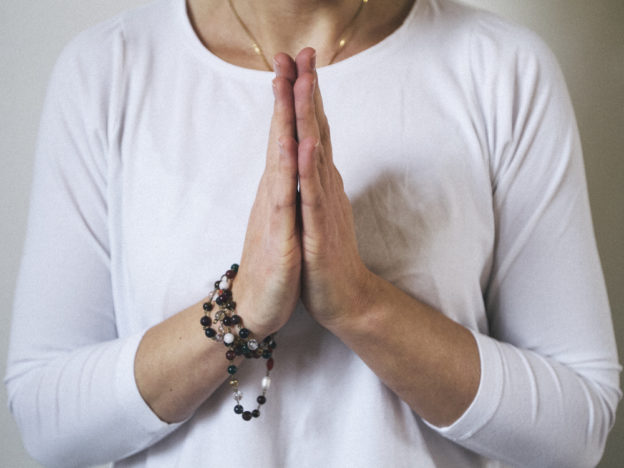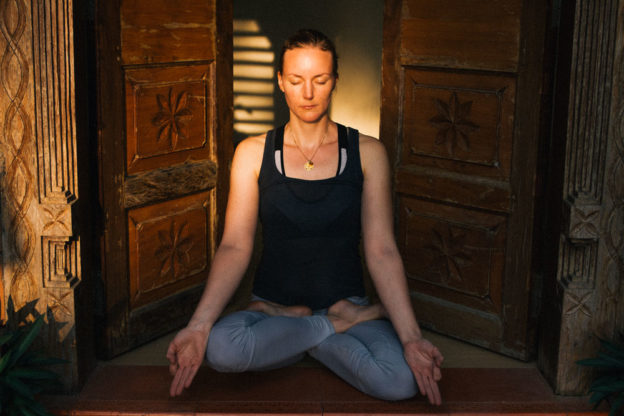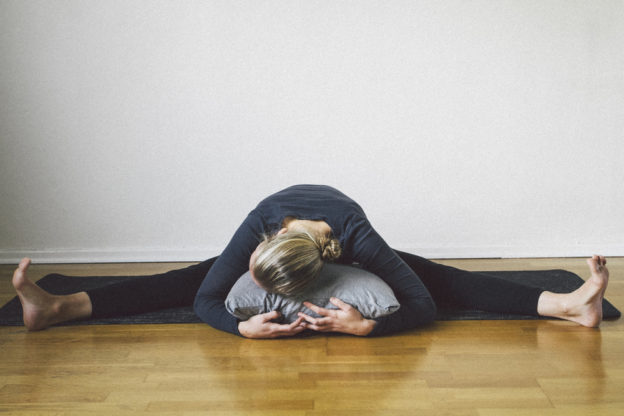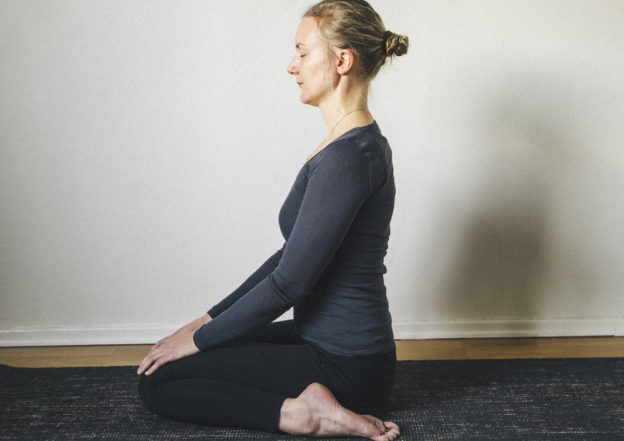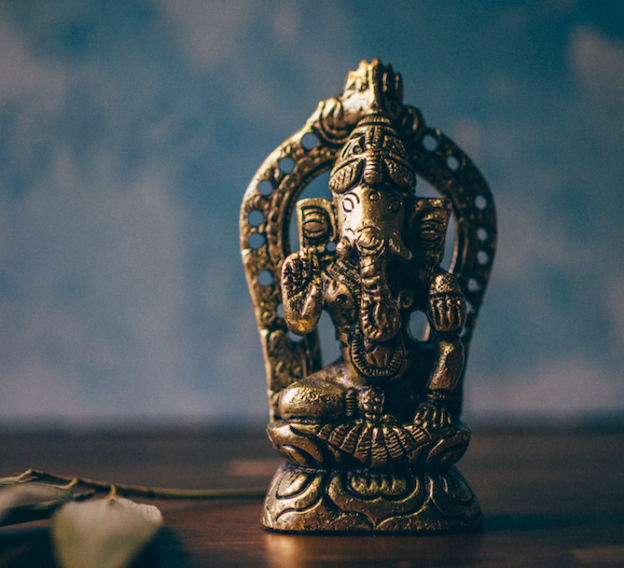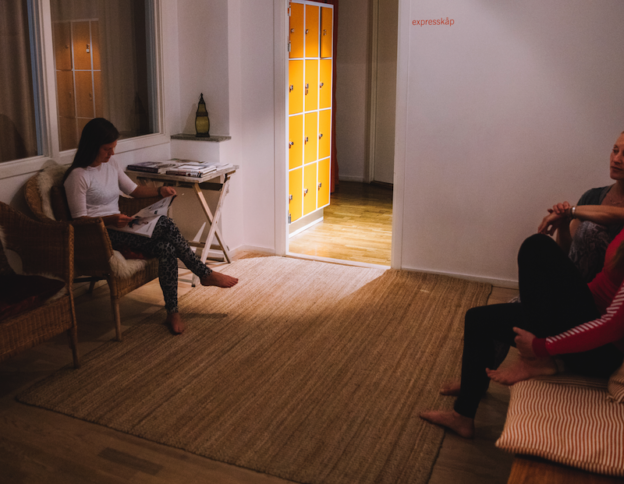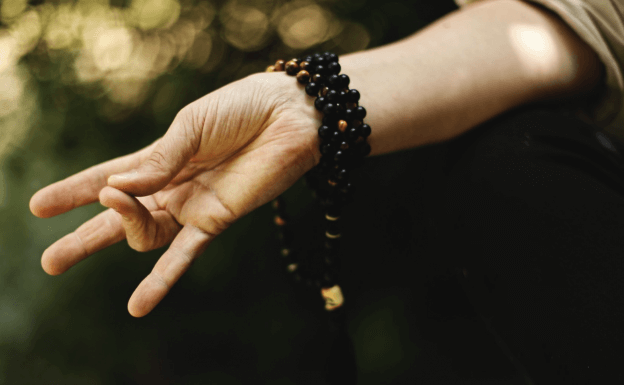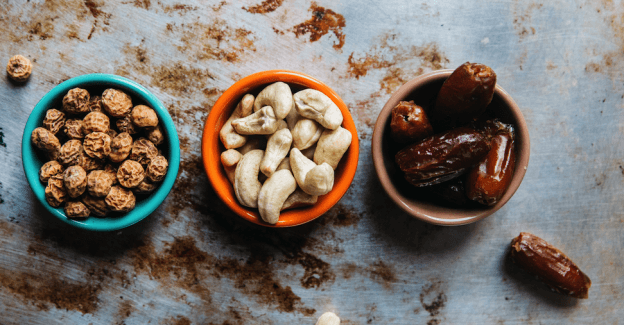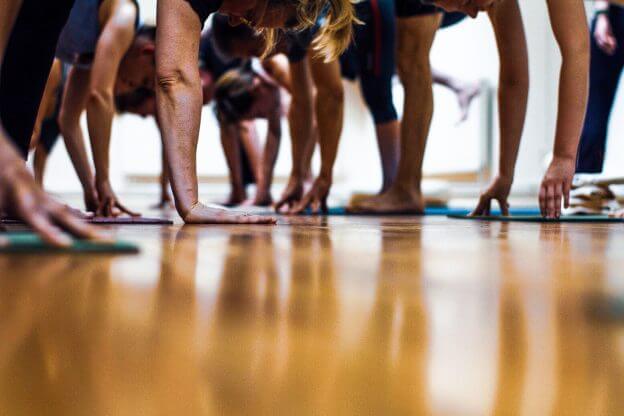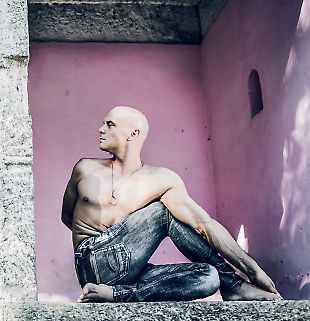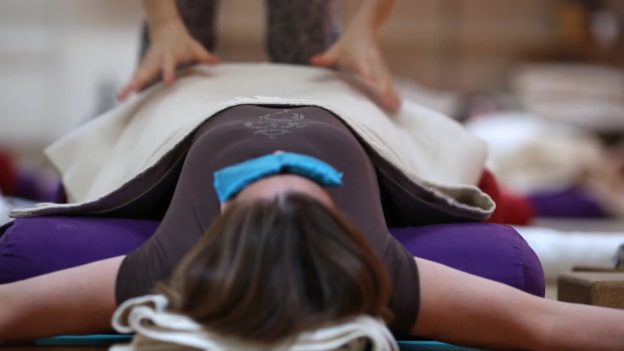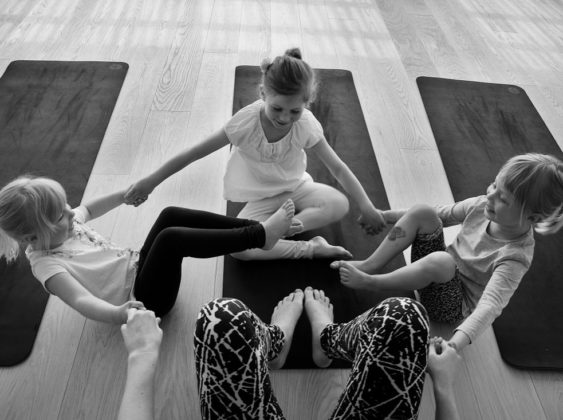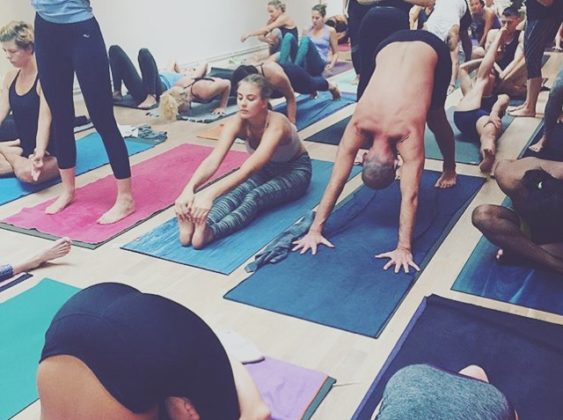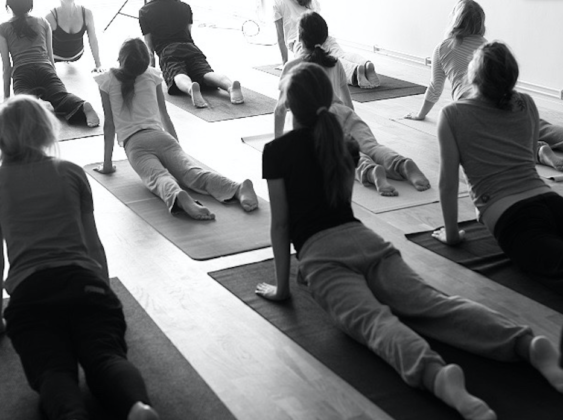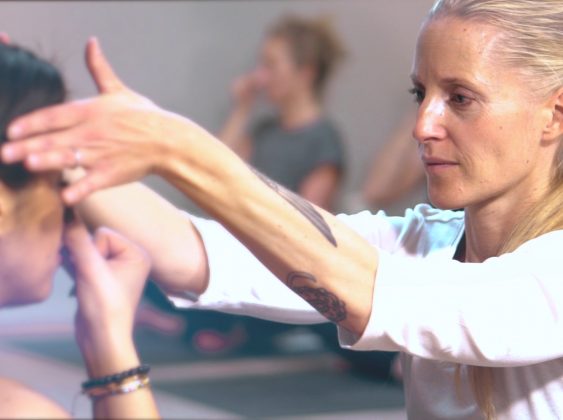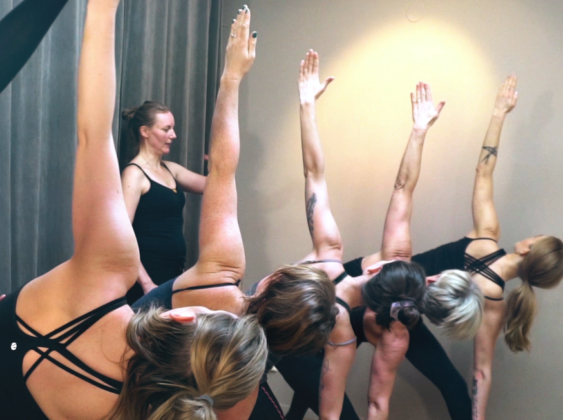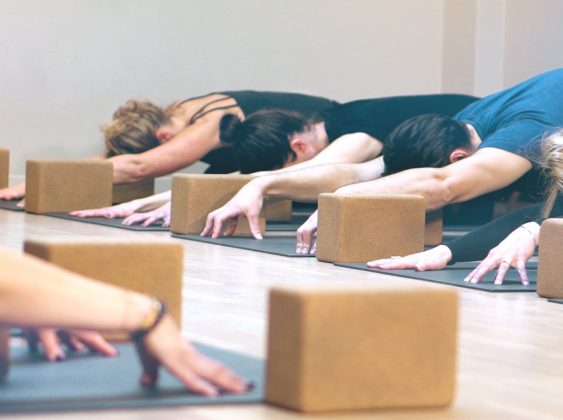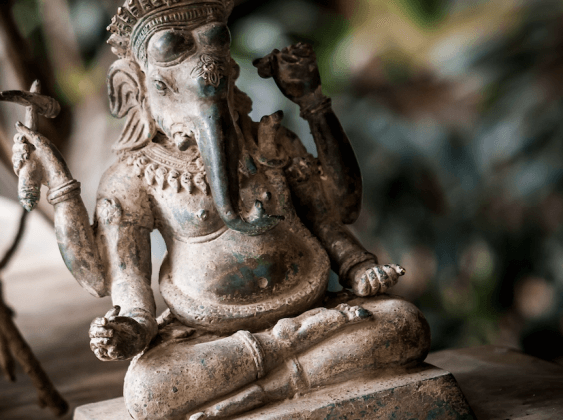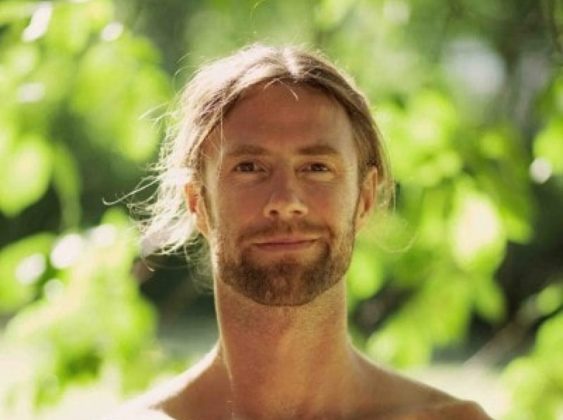
– When did you start practicing yoga and why?
– Thankfully, I found yoga at a young age. I was drawn by the philosophy before I began asana practice. I loved the fact that yoga was experiential in nature in that one must enter bravely into the unchanging spaciousness of yoga to experience it. No amount of talk or reading can take one there unless it is consciously practiced and/or contemplated on a regular basis.
– What did you like about ashtangayoga and the mysore practice?
– When I first found ashtangayoga it simply took a hold of me and never let go. I felt I touched on something I immediately recognized but had forgotten. Instantaneously, I just knew, on a deep level, this was the practice for me, and I have been dedicated to the transformational process ever since.
Now, after over 15 years of consistent ashtangayoga practice I continue to be fascinated and awed by the beauty and intelligence within it. It is so much more than a like, it is a love and a honoring. When I think of the tireless devotion of my teacher and his teacher’s teacher and so on, I feel the strength of each and every one of these passionate individuals within me. They carry me through my learning process and have sent clarity through times of doubt. It is much bigger than me, and when I expand into this space, I feel nothing but infinite possibilities. The lineage of this tradition is vast, and in mist of all of that, I feel at home.
– What are the main differences between a led class and a self practice form of yoga from the participants point of view? What are the advantages with both methods?
It is important to point out that in ashtangayoga, there is only one method; however, there are various layers that comprise the method. It includes both Mysore practice (self-practice with the guidance of a teacher), and led class. Traditionally, it is a six day a week practice, with one led-class a week, sometimes two, with the rest of the days devoted to mysore style practice. This makes the whole experience complete. Those who only engage in led classes are never receiving the total experience. If you were to peel back the layers of misinformation in regards to the practice one would clearly see that ashtangayoga is mysore style practice and mysore style practice is ashtanga-yoga. Led classes give students the opportunity to learn the proper vinyasas to garner rhythm and pacing in their practice, learning the proper movements and counts, to then implement in mysore practice which is self-led but always under the guidance of a teacher. They work hand in hand and synergistically. When I look at led class and mysore class I don’t see two methods I see One as it was meant to be taught and the way that makes sense in the overall scope of the practice. What’s the point in watering it down? This practice was designed for ALL people no matter one’s background, age, or limitation. It is all there. The richness of the practice resides in it’s completeness.
– Many yogis are hesitating doing a self practice and finds the mysore style a bit scary, why do you think that is?
– Releasing control and letting go to the process isn’t always the easiest thing to step into, but can definitely be rewarding. I think for many there is an intimidation factor with being in a room where people are practicing at their own pace from memory, and it can feel daunting. I always urge students not to let that stop them from trying it. It is in mysore class where you learn the practice, so not knowing anything on your first day is perfectly and absolutely where you should be. Jokingly, I often tell those who are hesitant to try mysore class, because of various excuses, that if they have air in their lungs, then they are the perfect candidate to get started. My job as a teacher is to meet the student where they are now, and assist them in learning the practice in a way that suits them. It is as simple as that. Yes, a breathing individual is the bare minimum requirement, but a dose of courage never hurts.
Beyond that, I have observed, time and time again, as students begin to apply the principles of the practice, they in turn, find a new found strength within themselves, as they venture forward and face obstacles presented head on. Yes, it may feel scary in the beginning, but with consistent practice I’ve seen miracles unfold and when we embrace our fears there is no amount of confidence that can be acquired when doing just that. Encountering the unknown and opening up to our inherent potential is much more then simply bending the body. It is within the daily discipline that this potential awakens as it points us to a more fulfilling place than we could ever imagine for ourselves.
– Traditionally the mysore practice is done in the morning, what are the benefits with doing an early practice? Have you always been a morning person yourself? What would you say to someone who is interested but a bit daunted by getting up earlier than usual to get on the yoga mat?
– It’s funny because when I first started practicing yoga I wasn’t necessarily a morning person. In the beginning, it was more about fitting practice into my daily schedule instead of making it a first priority. However, overtime it simply made sense to start my day in this manner. There is definitely a reason why the yogis of old practiced in the pre-dawn hour. There’s a powerful quiet energy at this time. It also has a way of setting an intention and a prayer for the rest of the day that simply sets me straight and clear and brings a wealth of benefit. However, let’s be frank, sometimes certain priorities call to our attention at certain times of our lives. Weather taking care of young children, family members, and/or our work. Sometimes the best time to practice is when it can be fit in. I do realize the challenges some people face to do an early morning practice. I think in the beginning consistency is key no matter what time you are available to practice. From my experience, once the steadiness of regular practice was established the transition to an early morning practice happened naturally.
– Sweden is a country with four different seasons and half of the year we have very little sunlight, in what way can this affect the practice?
– It’s really interesting because since moving to Sweden I’ve experienced a huge growth period in regards to practice. This is partly due to the fact I was working with a great amount of resistance settling here, with the isolation, cold and darkness to contend with. However, what we bring to our mats is truly a state of mind, and with more external challenges, it forced me to dig deeper inside, which looking back on it, was a blessing. Now, I thank those challenges and extremes because it lit a fire within that might not have been lit otherwise.
In the same light, I do feel it is important to be sensitive to the seasonal shifts and adjust the rhythm of one’s practice during these times of external extremes, instead of trying to force the same pacing month after month. I have definitely become more sensitive to seasonal cycles, as well as, moon cycles with more years of practice under my belt, and I feel there are times where making adjustments is an important step in keeping the body/mind healthy.
– Do you practice today for the same reasons as when you started? What is the most important thing about your present practice?
– In the beginning when I first started yoga practice I was drawn to it in the hopes to heal suffering both mental/emotional as well as physical. Whereas now, it has become more devotional in nature as I place myself in the hands of something higher, that back then, went far beyond my initial understanding but was felt within the depths of my being. In many ways words don’t do it justice. The experience of yoga has filled me with gratitude for simply being alive and has placed my internal and outer world in the proper perspective.
The most important thing about my present practice is that I continue on and stay the course. My faith has grown over the years and has strengthened over time. There’s just this knowing that begins to arise that brings comfort through times of darkness, and the simplicity of showing up to this on a daily basis has been a blessing no matter how arduous. No one said it would be easy, and why should it? Once you get a taste of the Truth there is nothing sweeter.
– When does yoga stop being yoga to you?
– I don’t know if I am at liberty to say when yoga stops being yoga; however, in my heart I feel yoga is the living embodiment of who we are. It is our true nature. It is pure oneness. Through yoga practice we can only hope to receive a small taste of what this is as we quiet the mind and settle into our inherent nature. Reverently, it is this taste of something true, that keeps bringing me back, time and time again, to daily practice and contemplation.
blogs
Our present state of mind
Our mat is our universe and our supportive energy. Our practice on it reflects how we act…
To be a beginner…
Thank you for taking the time to read and hopefully better understand your body, yourself and others.…
Happy Holiday part 1
In the Indian and yogic tradition you are suppose to rest when you have your menstruation. Why?…

Receipes
Några enkla kostråd för att hålla vata i balans under hösten
Ät och och drick varmt. Naturligt söta, sura och salta smaker är bra. Undvik råa grönsaker, knäckebröd…
Sött och gott
Raw cheesecake med hallon och granatäpple Botten: 1 dl valnötter, blötlagda 5 dadlar, urkärnade och blötlagda 1…
Yogayama’s bröd
En stor limpa: 3 dl grovt ekologiskt och biodynamiskt dinkelmjöl 1 dl havregryn, ekologiska 1 dl russin,…

Latest Videos
Carina Schütt
Carina har en bakgrund bestående av akademiska studier inom beteendevetenskap. Sedan hennes första möte med yoga ägde…

Workshops, Courses & Events
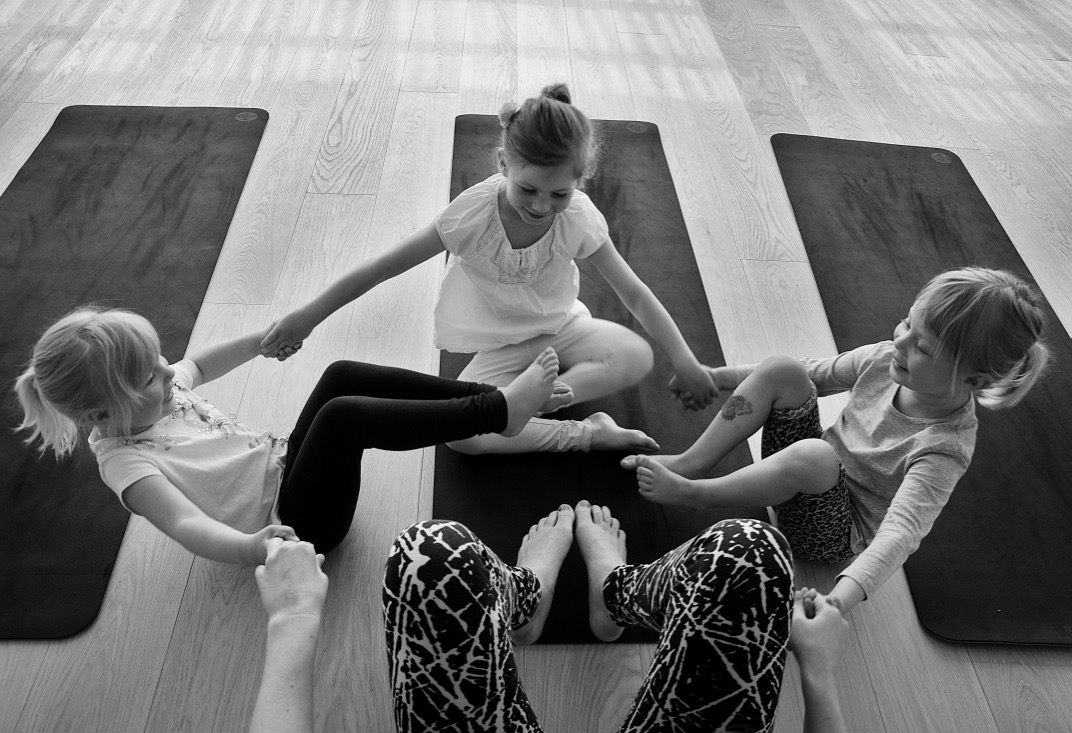
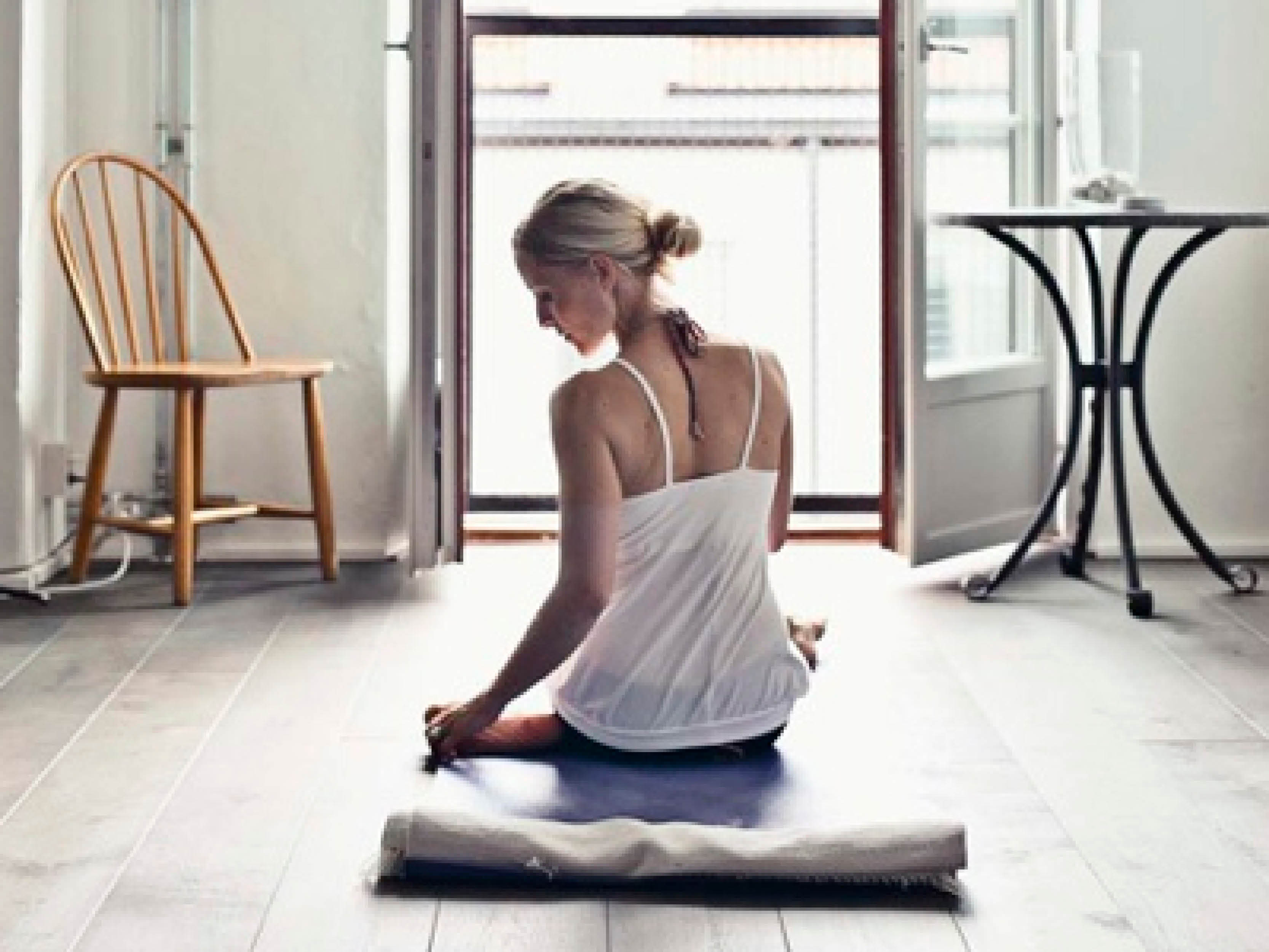
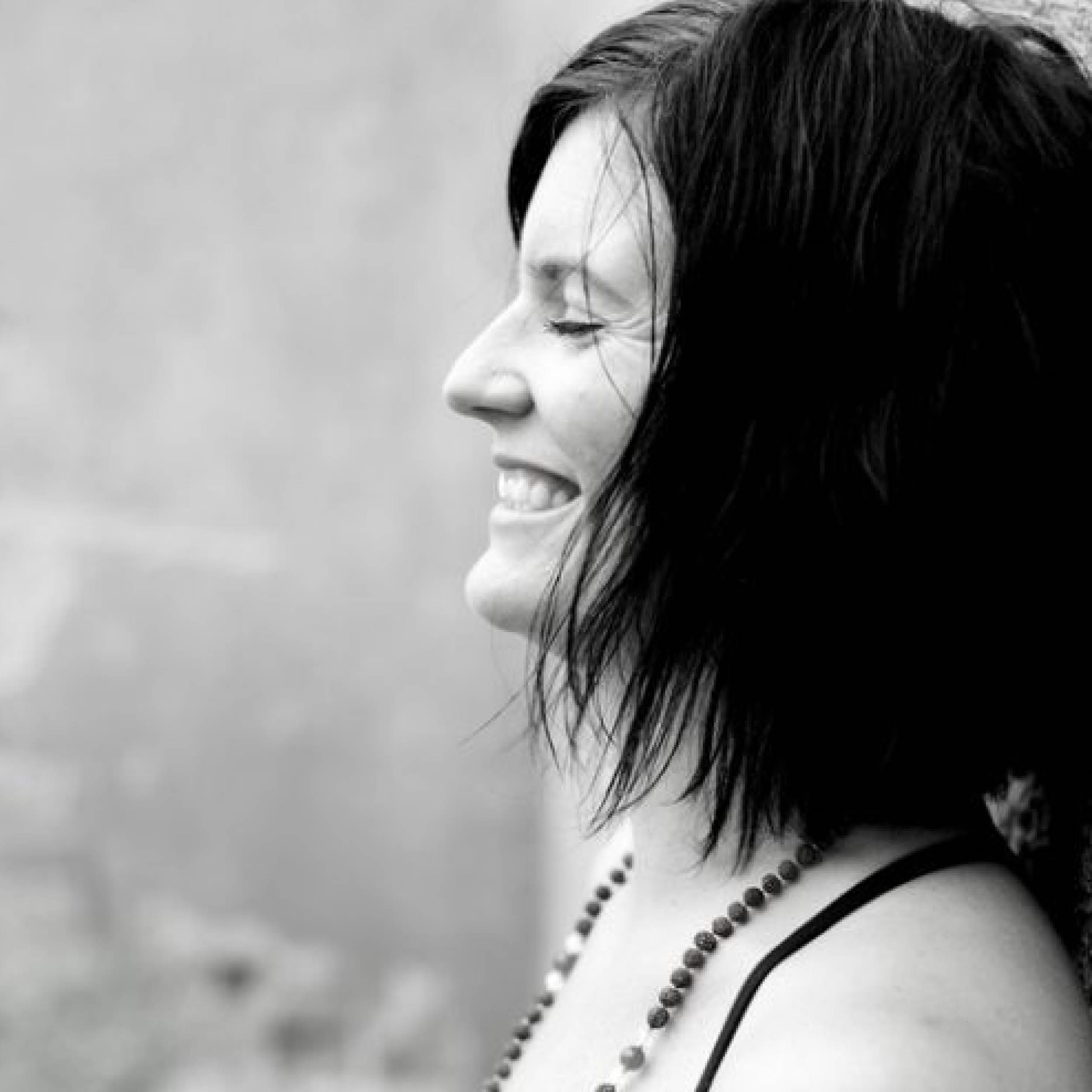
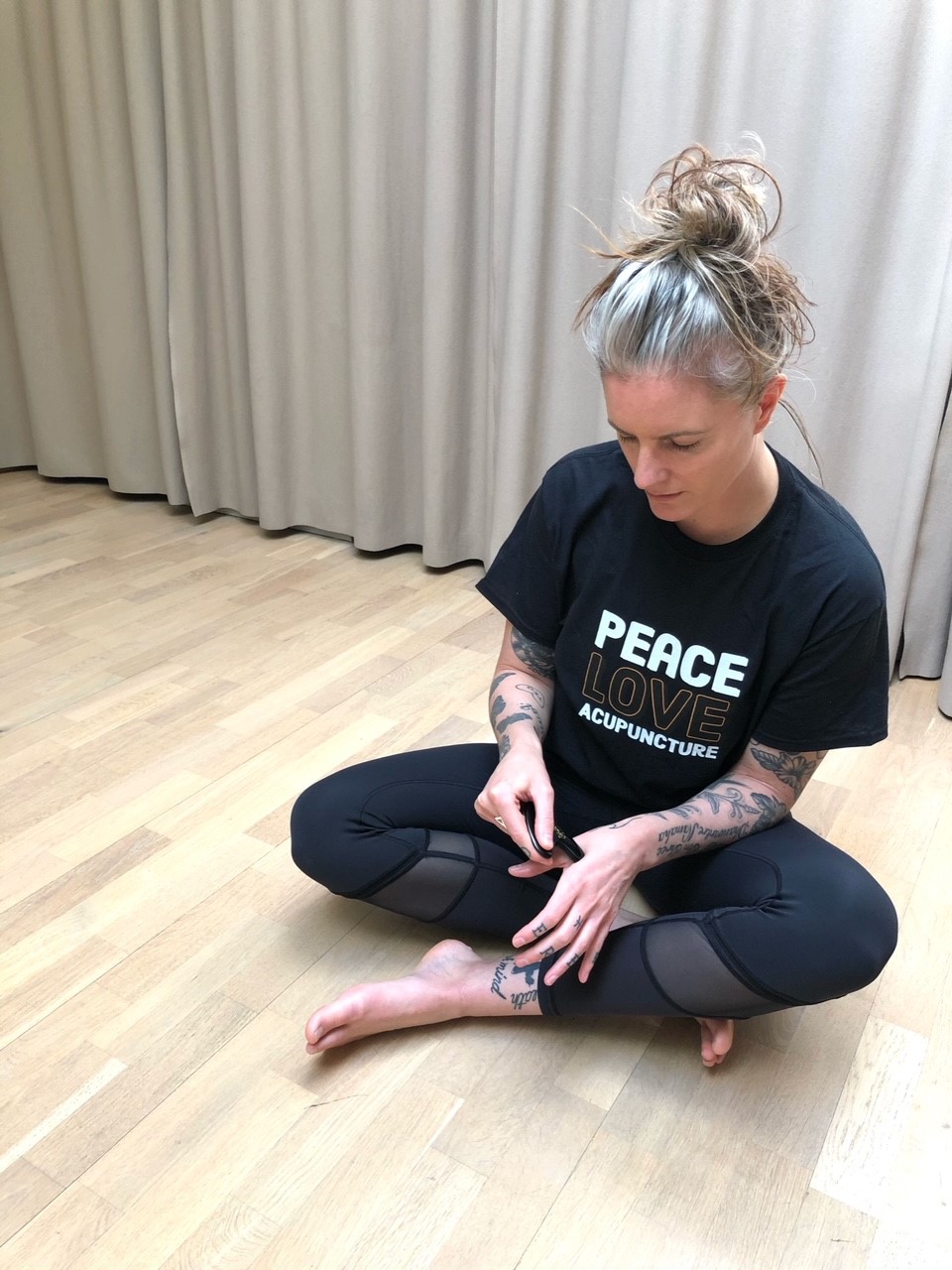
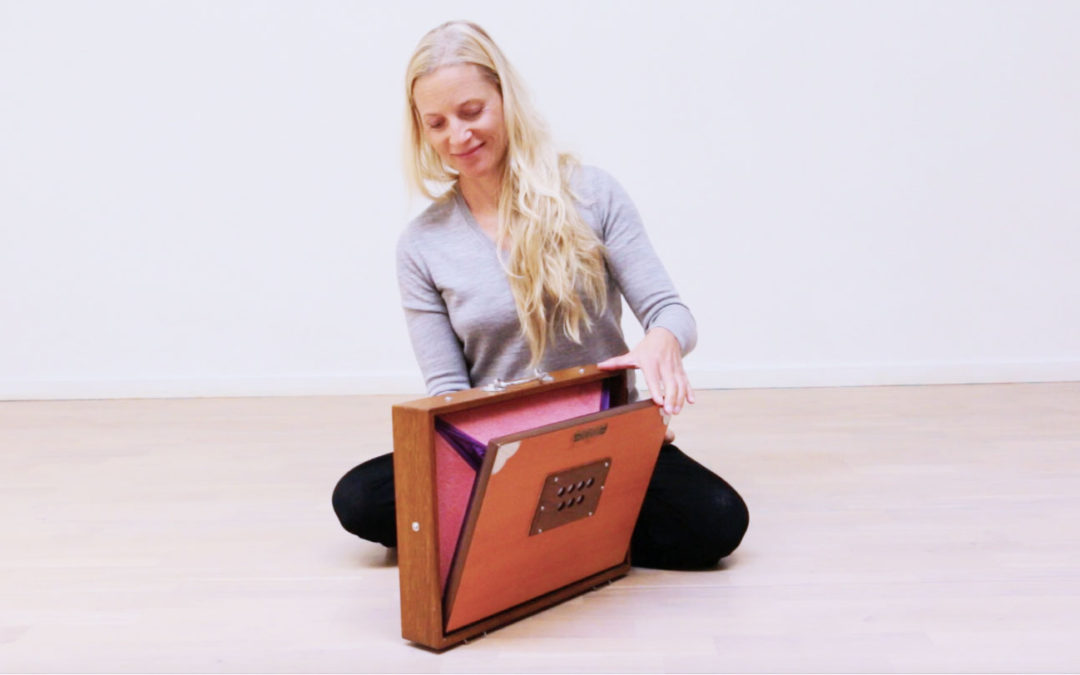
No Events Scheduled! .
No Events Scheduled! .
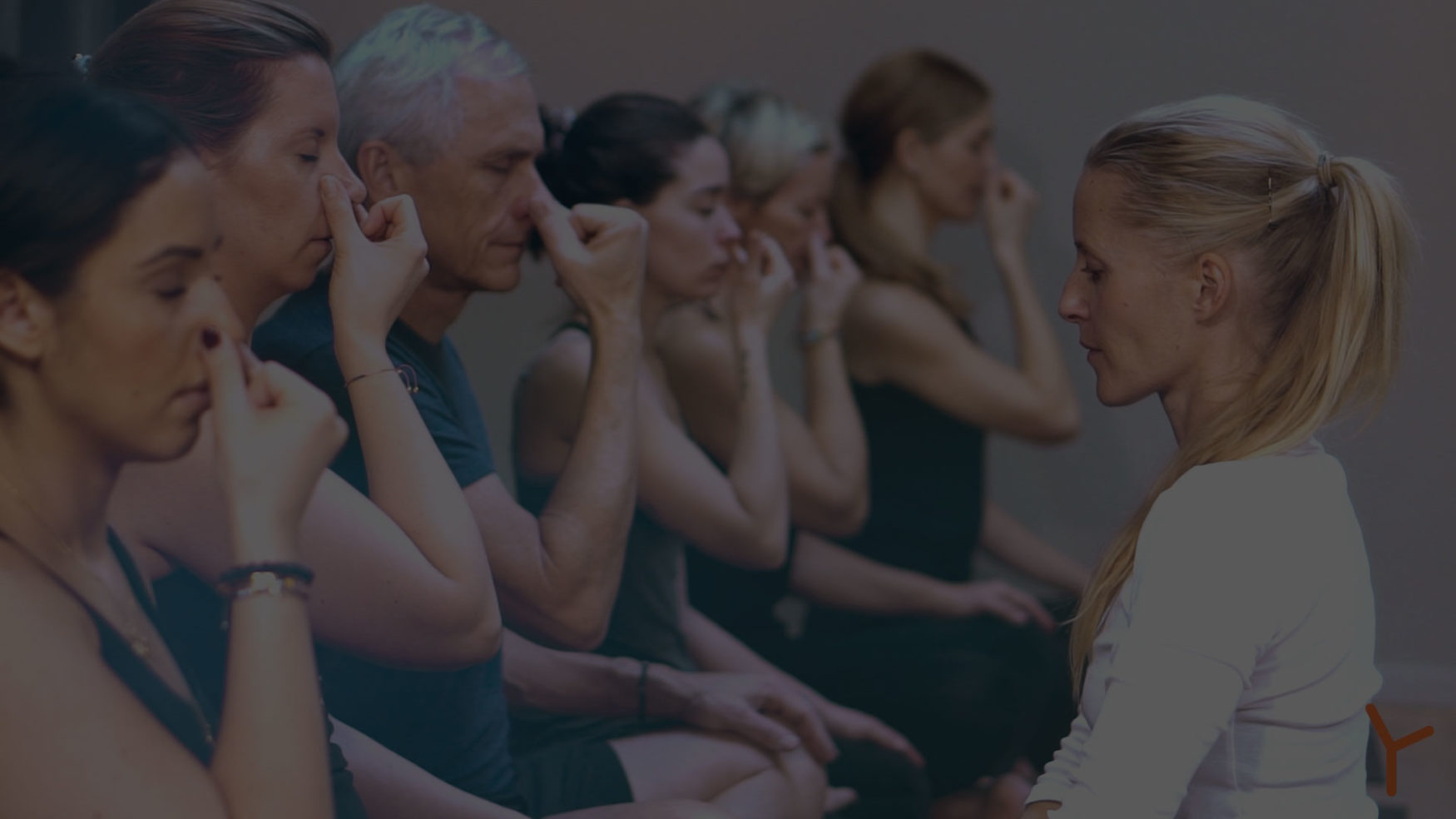
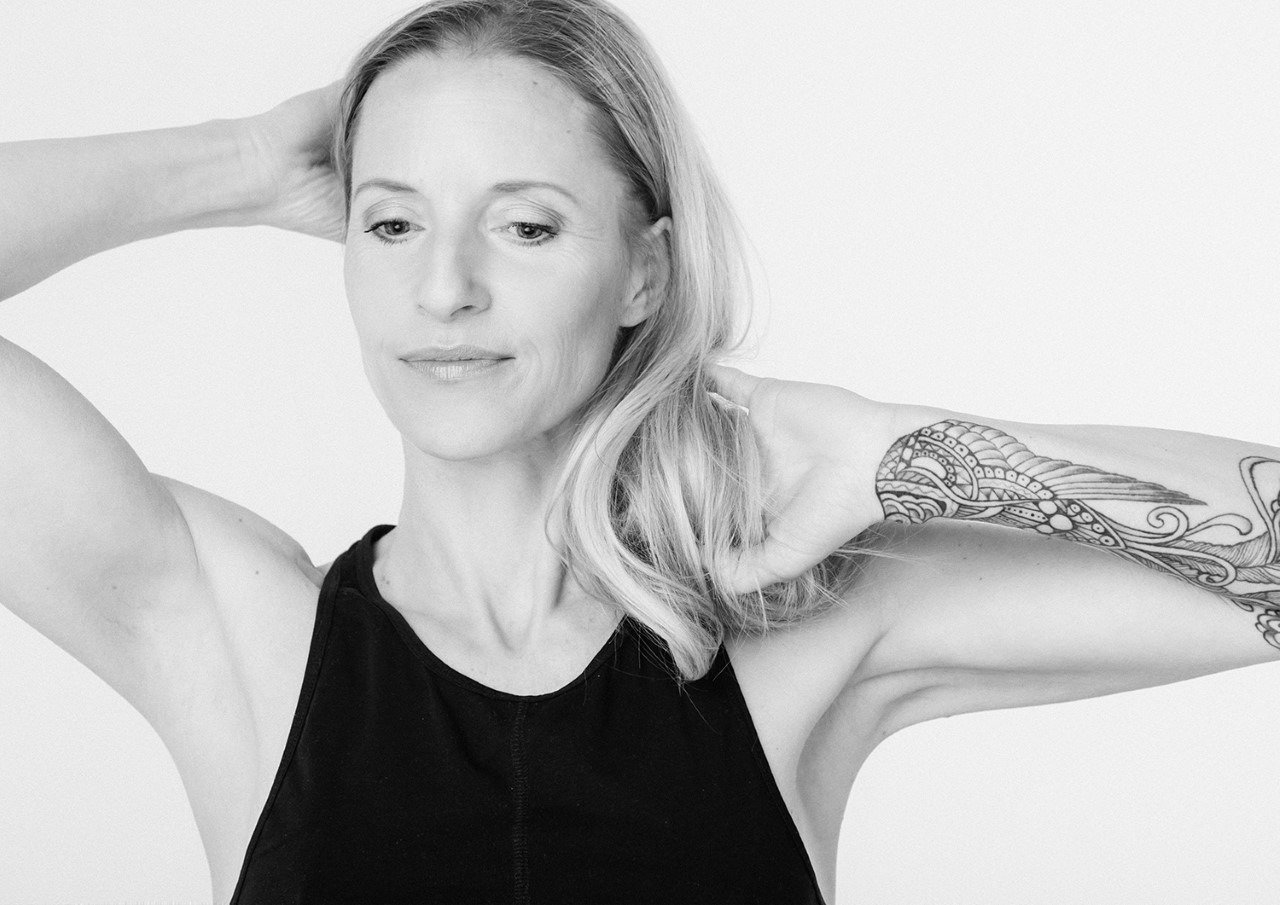
No Events Scheduled! .

No Events Scheduled! .

